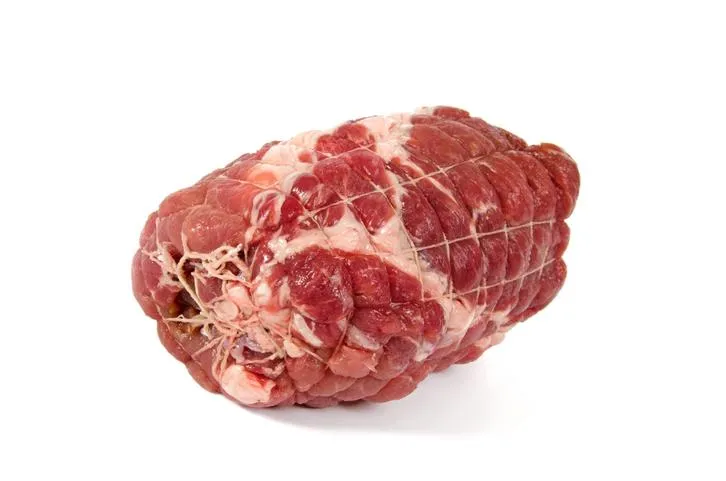
🥩 Featured Cut Deep Dive: Bottom Round Roast
The Underdog Cut That Delivers Big-Time Flavor When You Play It Smart
If you’ve spent any time around a butcher block or behind a smoker, you know not all cuts come with marbling and fanfare. Some, like the Bottom Round Roast, show up humble, lean, and a little tough-looking—but give them time, technique, and some heat, and they’ll show you what real flavor’s about.
This week, we’re giving love to the Bottom Round Roast—a classic, cost-effective, protein-packed workhorse that’s begging to be slow-roasted, thin-sliced, and devoured with a side of horseradish and swagger.
🧬 Cut Breakdown: Where It Comes From
The bottom round roast comes from the hind leg of the steer, specifically the bottom portion of the round primal. This is a well-used muscle group, which means it’s naturally low in fat and dense in connective tissue. Not exactly tenderloin territory—but that’s not the point. This cut’s power lies in its intense beef flavor, large size, and ability to feed a crowd when treated right.
It's adjacent to other cuts in the round like:
Top Round: Slightly more tender, often used for London broil.
Eye of Round: Even leaner and more uniform in shape—common for roast beef.
But the bottom round? It’s the big player for pot roasts, roast beef sandwiches, and anything where slow heat and sharp knives make the magic happen.
💸 Why It Deserves a Spot in Your Lineup
Let’s get real. Rising meat prices are pushing folks to think beyond ribeyes and briskets. And this cut’s been waiting in the wings, quietly reliable, wildly versatile, and way more affordable per pound.
Budget-friendly: Often under $5/lb, even less in bulk.
Big yields: Easily feeds 6–10 people.
Meal prep hero: Slice it thin and it keeps beautifully in the fridge for days.
Saves well: Leftovers don’t dry out if you slice and store it right.
Pro kitchens have used it forever in sliced roast beef, deli trays, beef dip sandwiches, and family roasts. Now it's making its way into home kitchens and smoker rigs for good reason.
🔥 How to Cook It: Three Winning Approaches
1. The Classic: Slow Roast & Reverse Sear
Perfect if you want pink, tender slices for roast beef or sandwiches.
Steps:
Dry brine or season heavily with salt, pepper, garlic, and paprika.
Let sit at room temp for 30–60 minutes.
Roast at 250°F until internal hits 130°F.
Rest 20–30 min under foil.
Optional: blast it in a hot skillet or 500°F oven for a 5-minute crust.
🔥 Pro Tip: Add beef broth or tallow under the roast to catch drippings and keep it juicy.
2. The Braise: Fork-Tender Roast
Great for comfort food, stews, and shredded beef dishes.
Steps:
Brown roast in a Dutch oven.
Add aromatics (onion, garlic, carrots) and liquid (beef broth, wine, or tomato).
Cover and braise in the oven at 300°F for 2.5–3 hours.
Check for tenderness—should be fork-ready.
🔥 Pro Tip: Shred leftovers and mix with juices for epic tacos or sliders.
3. The Cold Cut King: Homemade Deli-Style Roast Beef
Ideal for sandwiches, charcuterie boards, or bento boxes.
Steps:
Roast to 125–130°F internal.
Cool fully in the fridge (overnight preferred).
Use a slicer or ultra-sharp knife to cut whisper-thin.
Serve with horseradish cream, pickled onions, or sharp cheddar.
🔥 Pro Tip: Chill fully before slicing—makes a huge difference in texture.
🧠 Butcher’s Science: Why You Have to Slice Thin
This cut is not forgiving if sliced thick or with the grain. Doing either will highlight its toughness. The muscle fibers are long and dense, so slicing thinly and against the grain shortens those fibers, making the bite tender and silky. It’s not optional—it’s essential.
🧂 Flavor Boosters
Because the bottom round is lean, you’ve got to bring the flavor from the outside:
Dry rubs with salt, black pepper, garlic powder, chili powder.
Marinades with acid (vinegar, citrus, wine) help break down fibers.
Basting with butter, tallow, or jus keeps the surface glossy and juicy.
Smoke (subtle hickory or cherry) adds depth without overwhelming it.
🥪 How to Use It
Roast Beef Sandwiches: Pile high with provolone, horseradish cream, and pickled red onions.
Philly-Style Beef: Add peppers, onions, and melted provolone.
Tacos: Shredded with lime crema and cilantro.
Beef & Noodles: Toss slices into pasta or stir-fry.
Breakfast Hash: Chop leftovers into potatoes and eggs.
Final Thoughts
The bottom round roast isn’t trying to be filet mignon—and that’s exactly why we love it. It’s straightforward, dependable, and lets technique do the talking. When you respect the cut, slice it right, and season boldly, it punches way above its weight.
This week, take the leap. Slow-roast a bottom round. Slice it thin. Slap it on a sandwich. And remind yourself that good meat doesn’t have to be expensive—it just has to be respected.
